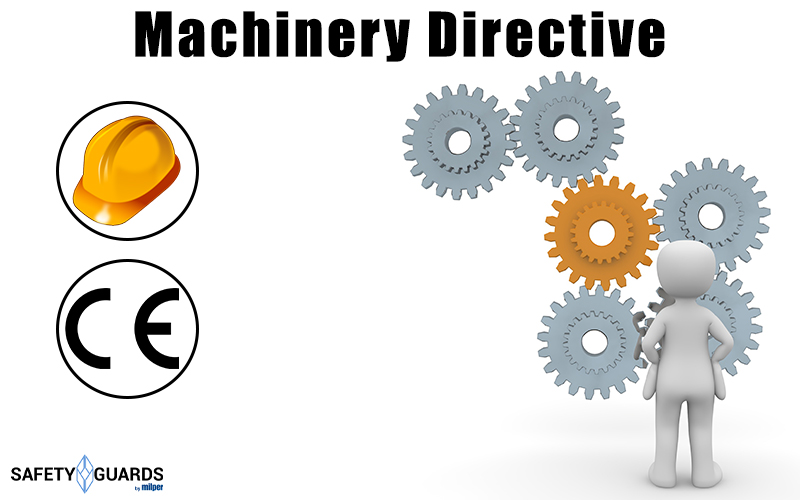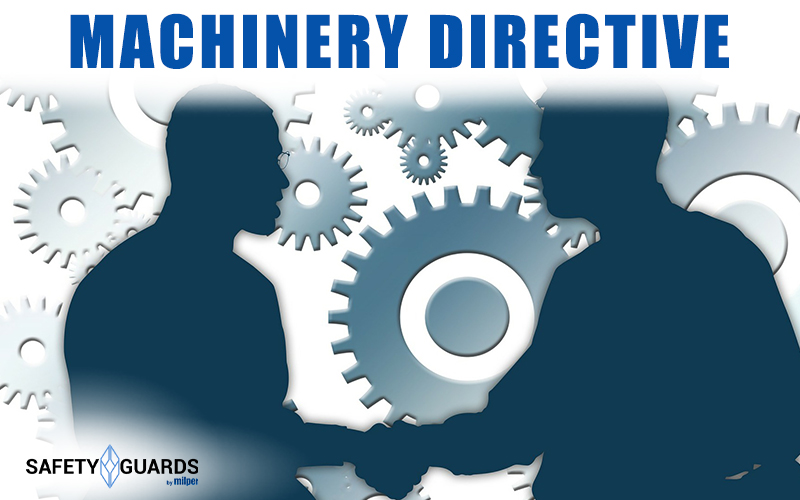SECURING MACHINES
INDEX
1. SECURING
2. CE MARKING MACHINERY
3. COMPLETELY COMPLETED MACHINERY AND CE MARKING
4. MACHINERY DIRECTIVE SUMMARY
SECURING
The Machinery Directive 42/2006/EC is the tool that the European Union makes available for occupational safety in every production context. It is a duty both for the machinery manufacturer and for the owner of the production unit, in his capacity as Employer and ultimately responsible for production, to consider the regulation concerning the safety of production devices.
However, the use of the Machinery Directive is only one of the aspects to consider. In fact, the Technical Standard provides for, the operational guarantee at the time of the first start-up, through CE Marking. It is also necessary to later complete the proper performance of routine and extraordinary maintenance activities and assess the weight of any modifications, in order to ensure full regularity and compliance with the Machinery Directive and the specifications required for the CE Marking.
1996 is the year that draws the line under the Machinery Directive. Until then, machines for industrial use did not sing the peculiar rigor of the current CE Marking. The manufacturers used a series of Technical Standards to protect the operator’s safety at work when using the device. The freedom of interpretation and the lack of a Machinery Directive capable of providing detailed information, faced a series of interpretative doubts and often led to regulatory shadows. The effect was machinery that did not always meet the indispensable requirements for obtaining the regular CE Marking.
The current Machinery Directive indicates the obligation of CE marking for devices manufactured after 1996. It is advisable for the company’s technical department and the occupational safety representatives to verify the presence of identification bearing the CE marking on each machine. The presence of the CE Marking is in fact an indicator of the equipment manufacturer’s full compliance with the Machinery Directive 42/2006/EC.
The Machinery Directive itself indicates the need to check the presence and correspondence of the technical file of the machinery. It should be considered that the CE Marking is the instrument that the manufacturer uses to certify that the instrument complies with the indications of the Machinery Directive. This allows the machinery to move freely within Europe, as it indicates that the manufacturer has equipped the device with the necessary precautions for occupational safety.
However, the presence of the CE Marking requires integration through a complete risk analysis according to the Technical Standards – such as, for example, EN ISO 14120 and EN ISO 14119 – regarding the Risk Assessment with reference to Accident Prevention Protections. The safety implementation of machinery manufactured before 1996 must consider the principle of non-compliance with the requirements of the CE marking and with the indications of the Machinery Directive.
Legislative decree 81/08 makes annex V available for the analysis of the weak points of the machinery, with a view to obtaining the CE marking. The interventions include the use of fixed or mobile Accident Prevention Protection and the use of Interlocking Devices. The technical evaluation of solutions for accident prevention purposes therefore requires a technical and regulatory analysis, attentive to the suitability of the CE marking and to the provisions of the Machinery Directive.
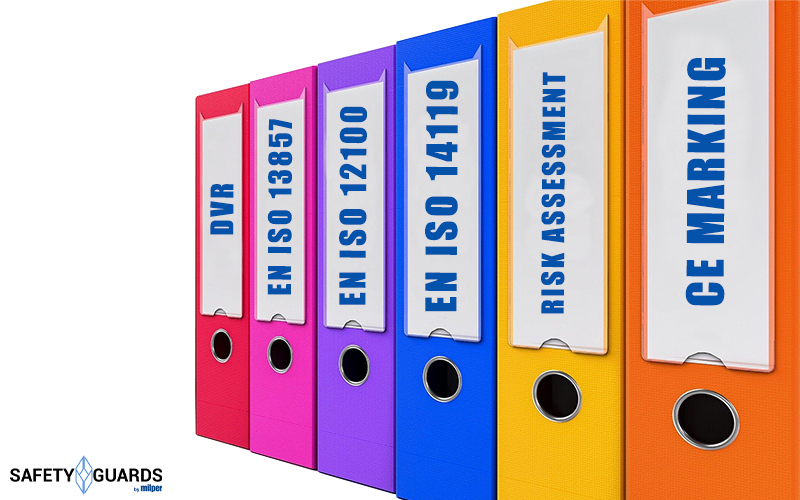
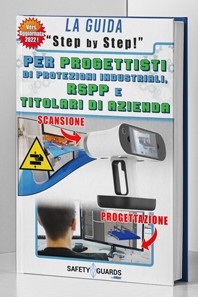
CE MARKING MACHINERY
Compliance with the Machinery Directive 42/2006/EC of CE Marking devices is one of the manufacturer’s obligations. It is the manufacturer of the machinery who is legally responsible for the non-compliance of the same with the specifications indicated at the time of its implementation. However, the obligation inherent in the CE Marking must not overshadow the role of maintaining operational safety at work, in compliance with the Machinery Directive.
In this case, it is the Employer who responds to the legal obligations and assumes responsibility in the event of damage caused to operators or third parties present in the context of the production unit. The entrepreneur’s role is fundamental in coordinating the action of the heads of the technical office, the Safety Manager and the production operators. The Employer’s obligations include:
- Verify the correct application of the Machinery Directive in the production unit.
- Activate the necessary measures and increase the level of Safety in the Workplace through means of barriers and other types of Accident Prevention.
- Ensure that the Industrial Protections are in working order and protected from any tampering.
Defining responsibility in terms of compliance with the Machinery Directive allows for an effective organization of roles, within the company context, so as to guarantee incisive action aimed at preventing accidents. In this regard, the RSPP – Prevention and Protection Service Manager – may be a delegate of the Employer, but may coincide with the Employer himself.
The RSPP has the specific task of assessing the compliance of machines with CE Marking requirements and compliance of maintenance work, to what is stated in the Machinery Directive. While it is true that the Employer is responsible in chief for what takes place within the production environment, the RSPP can be prosecuted by law if he or she is unable to prove that he or she has made the Employer aware, regarding any deficits in the Industrial Protection system.
Article 33 of Legislative Decree 81/08 speaks clearly in this regard. Having ascertained that each piece of machinery is provisional of CE Marking, it is necessary for each type of operation to be able to meet the indications described by the Machinery Directive. The correctness of the CE Marking can be verified directly on the machine, among the details that describe its characteristics.
Before starting maintenance operations, it is also necessary to read the manuals of the machinery and make sure of the sections dedicated to occupational safety and residual risk. The name of the machine manufacturer must therefore, correspond with what is in the CE Marking declaration of conformity and further technical documentation as per the Machinery Directive.
Compliance with the Machinery Directive, must then go through verification of the presence and proper installation, both with regard to the Accident Protection devices and the machinery components themselves. The basic principle is to ensure that everything necessary to guarantee Occupational Safety of the production has been done. Analyzing the CE-marked device so that it complies with the Machinery Directive is the main measure to be taken.
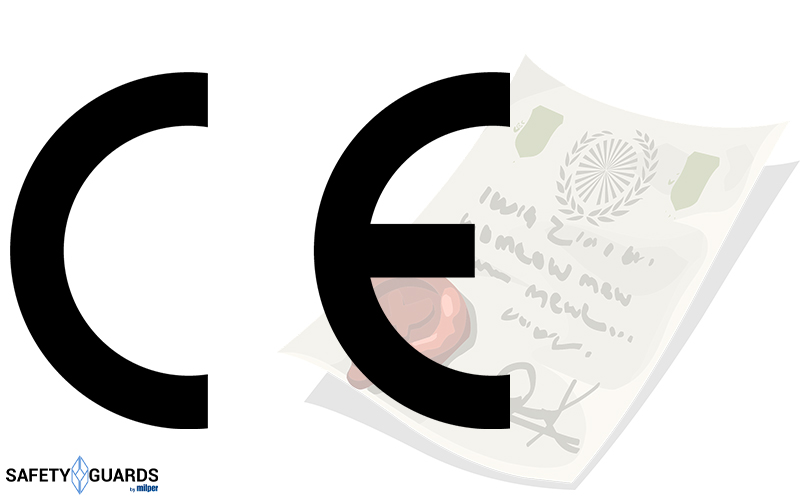
COMPLETELY COMPLETED MACHINERY AND CE MARKING
The manufacturer is not always obliged to directly provide CE Marking of the apparatus it has built. Indeed, this is the case with the Quasi Machine as a modular component. When considering the Machinery Directive 42/2006/EC, the need for CE Marking is in fact to be applied to machines, capable of performing their function independently and in the absence of additional components. In this way, the Machinery Directive excludes from the obligation, components that are not capable of performing a function independently.
CE Marking remains necessary at all times in order to ensure that the device meets the requirements of the Machinery Directive. However, certification must cover the entire Quasi Machine complex, precisely by virtue of the fact that the Quasi Machine fulfills its function only in association with the other modular components.
The Machinery Directive, therefore contemplates that the manufacturer in the specific case, shall issue a declaration of incorporation recalling the essential requirements of Safety at Work, as outlined in Annex I of the Machinery Directive. This declaration will be useful for certification and subsequent CE Marking of the machine, whether assembled de novo or as an expansion of the existing machine.
This also concerns the design of barrier and Accident Protection structures, which are useful to the extent that the modular machine does not have its own structure for prevention and protection of Occupational Safety in the production area. In addition to CE Marking, therefore, there remains a need to increase the standards of
Safety at Work.
, through active prevention from mechanical, thermal and sound risk of machinery.
In addition to the case of modular machines, there are additional contexts in which the machinery needs additional CE Marking to meet the Machinery Directive. This is the case with the remarketing of machines produced after 1996. It is important to consider that the constant updating of Technical Standards, results in the obsolescence of some devices mounted on machines that nevertheless carry CE Marking. Compliance with the Machinery Directive, in these cases, involves a careful assessment of the specific case.
If the modification involves adding additional components and changing the function of the machine, a new
CE Marking
. This is the case with work involving, for example, the addition of electrical panels and mechanical parts. If, on the other hand, the modernization involves only the addition of a Safety Device, the function of the machine is not changed. Therefore, a new CE Marking will not be needed to ensure compliance with the Machinery Directive.
The principle is to improve Occupational Safety, but without altering the function of the machine itself. Compliance with the Machinery Directive indicates, however, documentation of interventions and the preparation of a report concerning the improvements made. The purpose is to specify the purpose and gain in terms of Occupational Safety as a result of the extraordinary maintenance work.
This kind of upgrade can concern its the plant engineering component of the machine, but also the implementation of systems of
Accident Protection
connected directly with the machine. Interpretation with a view to improving Safety at Work, ensures that the intervention fully complies with the provisions of Machinery Directive 42/2006/EC.
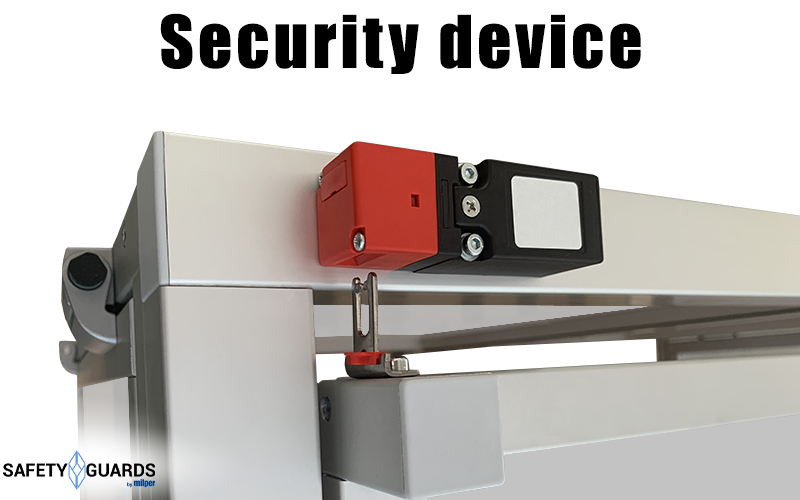

MACHINERY DIRECTIVE SUMMARY
CE Marking and the Machinery Directive 42/2006/EC, are two of the tools that the EU has put in place in order to protect the right to Safety at Work, in the business production context. If CE Marking is mandatory for the machine manufacturer, ensuring that the Machinery Directive is complied with is part of the duties of the
Employer.
.
CE Marking constitutes an indication of self-certification of the product’s conformity to the criteria specified under the Machinery Directive. As it is a certification issued by the manufacturer, checking its veracity is the responsibility of the person in charge of the company. The application of CE Marking, varies depending on the year the machinery was manufactured.
The apparatuses produced until 1996, complied with arbitrary technical dictates and suffered from a lack of uniformity in the rules to be applied. The landscape has changed dramatically since the introduction of CE Marking and the dictates of the Machinery Directive. This certification is used in order to ensure the movement of machinery in European trade.
Equipment without such a document therefore requires a conformity assessment useful for the adjustment of the Certification and subsequent CE Marking. Annex V of Legislative Decree 81/08 is the tool to be used to adapt machinery for CE Marking purposes. Compliance with the
Machinery Directive
is a specific responsibility of the Employer.
This implies the need for synergy between the top management figure and staff members in technical, production unit coordination and Risk Assessment. Therefore, it is necessary that the Machinery Directive be put in place on every piece of machinery, preventive measures be put in place through Safety Systems such as Accident Guards and adaptation of equipment, the proper functioning of Industrial Protection systems be ensured.
This is possible through the exact definition of the areas of responsibility of the Employer, the RSPP and those responsible for the technical and design assessment of the facilities. Therefore, it is a good idea to have each piece of machinery checked both for CE Marking compliance with the guidelines of the Machinery Directive and for upgrades in terms of increasing Occupational Safety levels.
Quasi Machine is an exception to the manufacturer’s obligation, to provide CE Marking. The nature of the single module, makes it unsuitable for performing the overall function of the machine. It will then be necessary for the manufacturer to issue a declaration of incorporation, capable of recalling the essential requirements of
Occupational Safety
according to the Machinery Directive.
Certification and CE Marking will subsequently be the task of a licensed and registered engineer. The principle also applies to retrofits and upgrades of machinery that already has certification, but with major change in function. The underlying rationale for the correct application of the
Machinery Directive 42/2006/EC
, falls under the protection of the Occupational Safety training and information of the operator, technical designers, maintenance and coordination managers of the production area.
